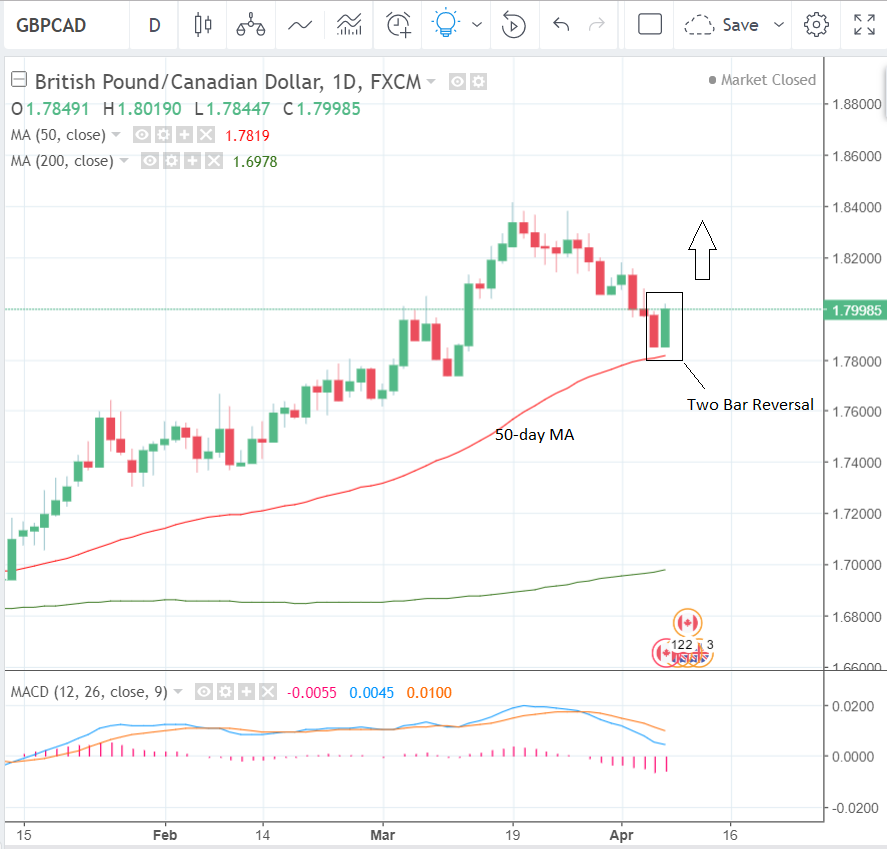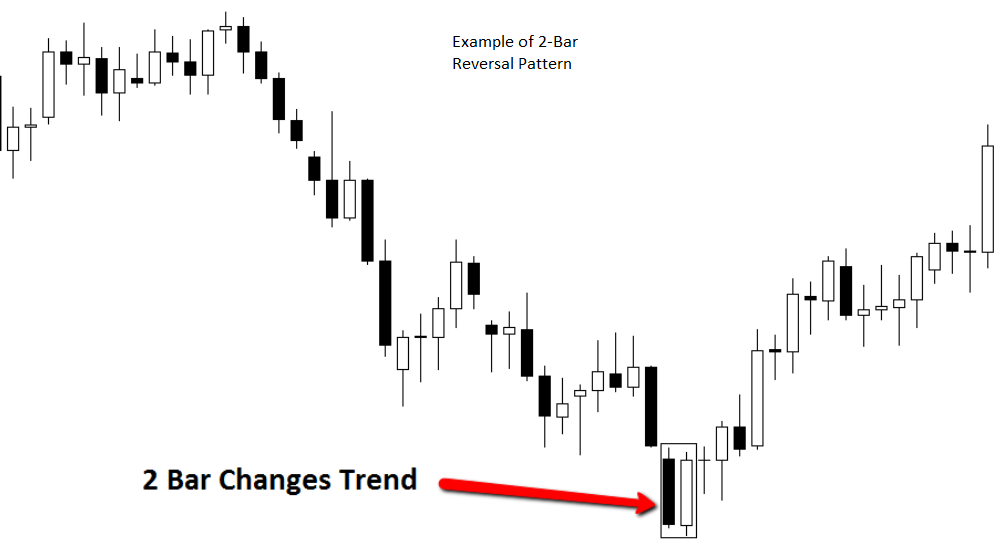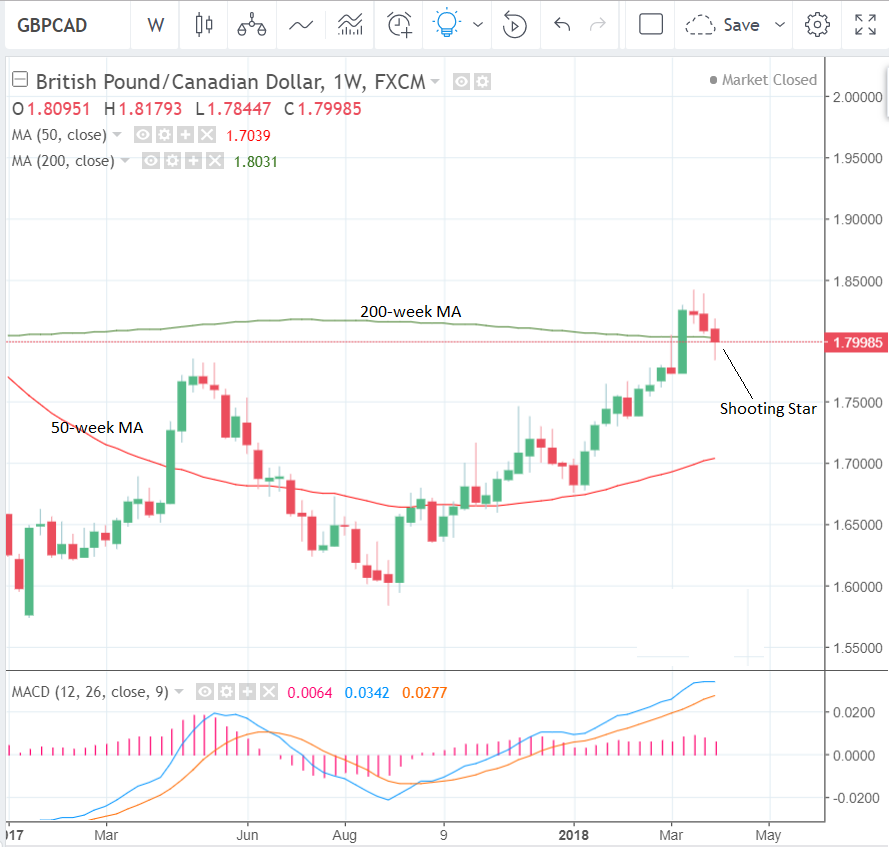Pound-to-Canadian Dollar Rate Forecast for the Week Ahead
- GBP/CAD in short-term down-trend but indicators mixed
- Canadian Dollar could gain boost if NAFTA agreement settled in week ahead
- Sterling to look to Industrial, Manufacturing and wage data in coming days

© Viv Idrange, Adobe Stock
One Pound buys 1.8022 Canadian Dollars at the time of writing, well below this year's high towards 1.84 but a slight improvement on last week's low of 1.7989.
Having been the worst performing currency in the first quarter of the year, the Canadian Dollar was in fact the best performing major currency in the first week of April as market sentiment towards the unit recovered as risks of a North American trade fallout subside.
From a techincal perspective, we note the Pound has continued to steadily lose value against the Canadian Dollar since our last week-ahead forecast and is now trading back below the psychologically significant 1.80 level again.
The recent steady decline in GBP/CAD can be seen most clearly on the chart of 4hr periods shown below:
Notice the falling step sequence of lower highs and lower lows which is the hallmark of an established downtrend.
Normally we wouldn't hesitate to predict further weakness in continuation of the short-term downtrend, but the box of green hatching underneath last Thursday's market lows represents an area of support which is likely to prove a tough obstacle to further downside penetration.
Ideally we would want to see a clear break below this region before forecasting more downside, with a move below 1.7725 confirming more downside to a target at 1.7600.
If we look below at the daily chart we can see why this is so - the green box represents the region around the 50-day moving average (MA), probably the most famous moving average in the history of finance.
This is likely to be a tough level for market bears to crack, and there is a strong possibility of a bounce higher happening at the current market level or even a complete reversal.
Downtrending prices often stall, bounce or completely reverse at the level of large moving averages such as the 50-day MA, because it is used by large speculators, fund managers and retail traders alike as a decision-making tool, and is therefore subject to greater-than-average levels of volatility.
Many short-term tactical traders also enter the market at or near the level of major MA's hoping to ride the bounces and reversals and in the case of GBP/CAD this will probably increase demand around the 50-day, pushing the exchange rate higher.
Yet this is not the only mixed signal on the daily chart, the pair has also formed a bullish two-bar reversal pattern at the lows.
Two-bar reversals occur when prices are in a downtrend and relatively long down-bar forms which is followed immediately by a relatively long up-bar of about the same length.
The chart below shows an example of how a two-bar reversal can mark the reversal point of a downtrend.
Image courtesy of DailyForex.com
Despite the bearish outlook on the 4hr chart, therefore, the daily is offering a more bullish picture.
The weekly chart below may also be bullish. Here the weekly period has formed a sort of hammer candlestick pattern last week, which is a bullish sign for the pair. The fact it has formed the hammer right on top of the 200-week moving average (MA) further supports the idea that an uptrend could begin from here, as the MA will probably provide underpinning support for a rebound.
Get up to 5% more foreign exchange by using a specialist provider to get closer to the real market rate and avoid the gaping spreads charged by your bank when providing currency. Learn more here.
Data and Events to Watch for the Canadian Dollar
The greatest source of volatility for the Canadian Dollar in the week ahead may not come from data alone, but rather from news about the ongoing negotiations with the US and Mexico over the North American Free Trade Agreement (NAFTA).
"There's no question that a NAFTA deal would have the greatest impact on the Canadian dollar. In the past week, both President Trump and Prime Minister Trudeau have said that significant progress has been made and its widely believed that a preliminary agreement will be announced at the summit in Peru beginning on Friday, April 13th," says Kathy Lien, Managing Director at BK Asset Management.
Clearly much depends on the content of the final deal as to whether it will support or push down the value of the Loonie, but assuming a deal emerges there may be a relief rally simply due to the reduction in uncertainty.
"We like CAD and MXN which provide a NAFTA harbour from trade tensions," say strategists at Société Générale in a note to clients at the head of the new week.
Part of the Canadian Dollar's strong performance versus GBP is due to Friday's positive employment data which showed a much higher-than-expected 38k rise in payrolls, easily beating the 20k expected.
It is generally expected that if it was not for NAFTA uncertainty the Bank of Canada (BOC) would be raising interest rates more aggressively because of strong domestic data, so if NAFTA does get resolved that could open the way to more BOC hikes, and with them a stronger Loonie, since higher interest rates tend are a big draw for foreign investors looking for somewhere lucrative to park their money.
From a hard data perspective the week ahead focuses in on housing, with March Housing Starts out on Tuesday, April 10 at 13.15 GM, then Building Permits at 13.30 and the New House Price Index for February out on Thursday at 13.30.
Data and Events to Watch for the Pound
The consensus now appears that recent poor business survey data was as a result of the weather - the 'Beast from the East' - rather than a real economic slowdown.
This means the Pound is probably on course for more gains as the Bank of England (BOE) are still likely to raise interest rates in May as most expect.
Higher interest rates are the fuel which drives currency trends as international capital-flows now dictate currency values, and they tend to move to places where interest rates are higher, all other things being equal, as that's where they will earn the most return.
Yet notwithstanding the weather, some doubt has now crept into whether the BOE will still pull the trigger in May.
In the coming week, there will be a heavy focus on wage inflation since if that rises the BOE is more likely to want to cool the economy with higher interest rates. In this respect, the IHS Markit REC recruitment industry survey, out at 23.00 GMT on Tuesday, April 9, may be instructive, as it includes the latest pay information from head hunters, according to Chirs Williamson, Chief Economist at Markit IHS.
"With the Bank of England having laid the ground for a May rate hike, the focus will, therefore, fall heavily on pay trends. In that respect, the REC recruitment industry survey will give an update on new starter and temp/contract staff pay rates, both of which tend to move in advance of pay growth in the wider economy," he says.
Another major release in the week ahead is Industrial and Manufacturing Production data for March at 9.30 on Tuesday, and the Trade Balance at the same time, which is forecast to narrow to -11.9bn in February from -12.3bn in the previous month - a narrower trade balance is sometimes positive for currencies, although the correlation of late seems to be waning.
Another major release is the Halifax house price index at 8.30 on Monday morning, with analysts carefully watching the result given the sector's lacklustre figures of late, and the especially poor Construction PMI result for March, which collapsed into contraction territory.
House prices ought not to be affected by the bad weather as much as construction 'activity' so this may be an important release for restoring some confidence in the sector.
If Halifax house prices show a deeper than expected fall, however, it may hit Sterling as it will almost certainly reduce the probability of the BOE hiking rates in May.
Current forecasts are for only a 0.1% rise in March versus the 0.4% increase in February, or 2.1% compared to a year ago vs 1.8% in February.
Finally, a heads up for Retails Sales in March comes in the form of the CBI Retail Sales monitor, out at 12.01 on Tuesday.
Get up to 5% more foreign exchange by using a specialist provider to get closer to the real market rate and avoid the gaping spreads charged by your bank when providing currency. Learn more here.








